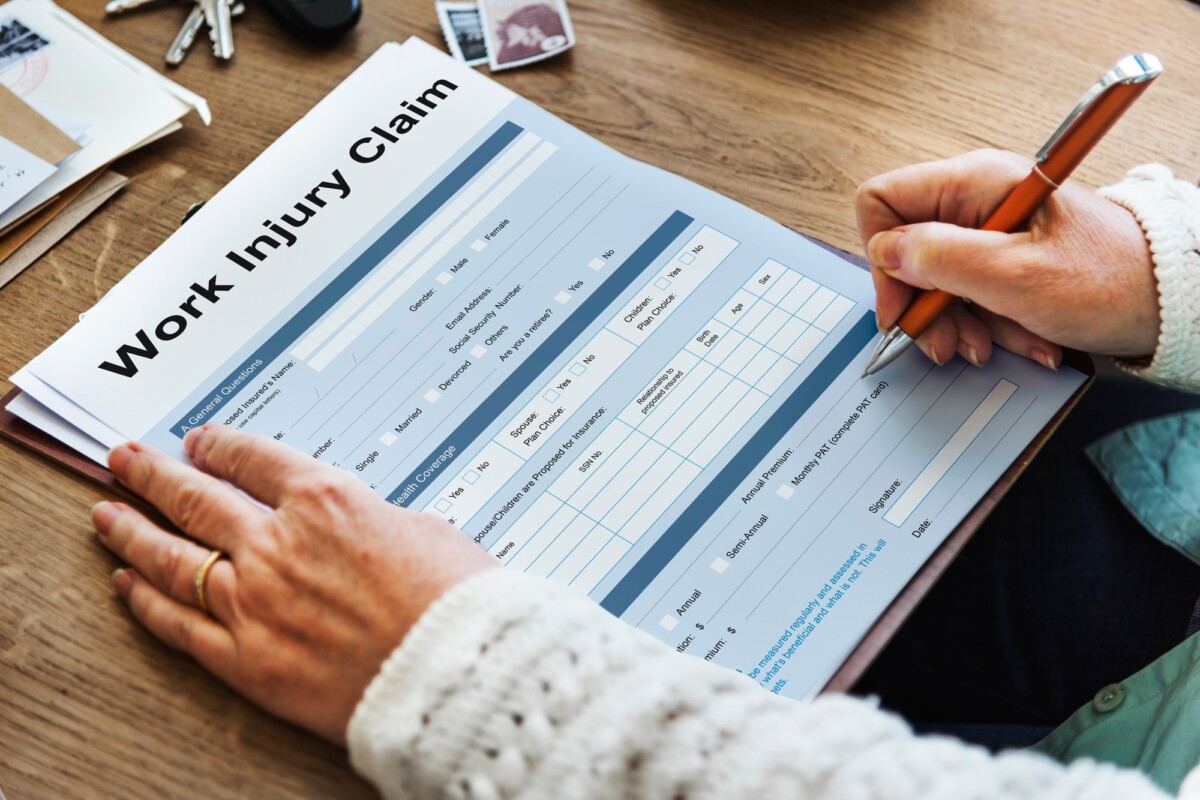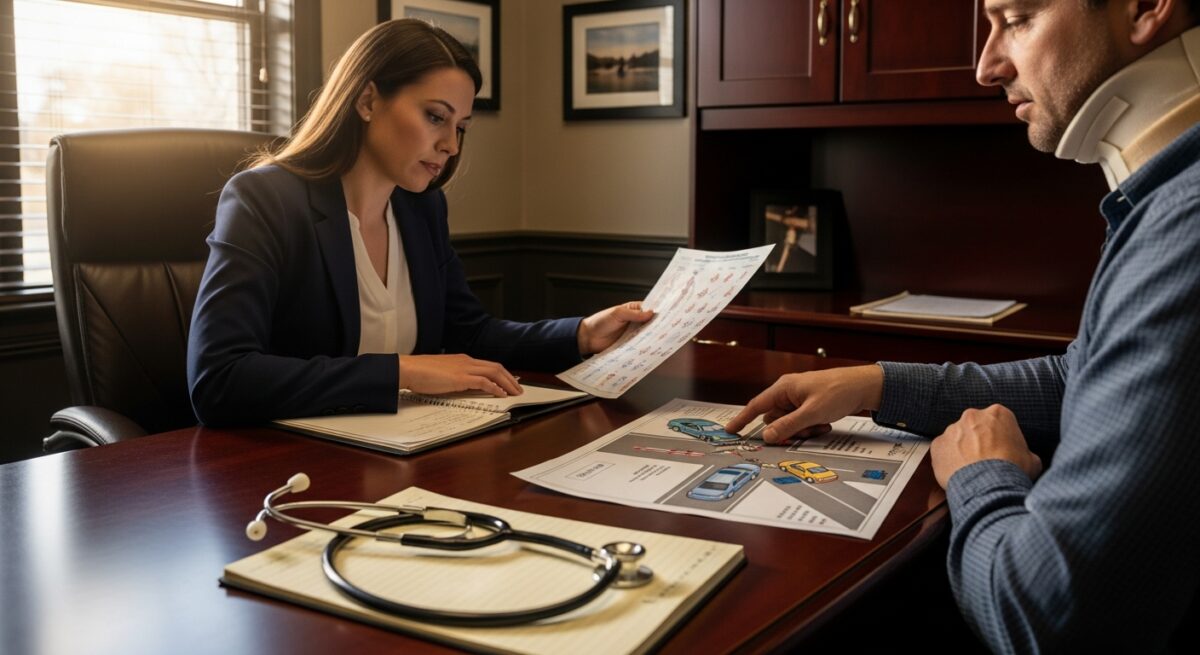How Personal Injury Claims Work: Filing, Negotiation & Settlement

Understanding personal injury claims is essential for anyone injured due to another’s negligence. Knowing how personal injury claims work helps victims navigate recovery and seek deserved compensation. This section outlines the key components of personal injury claims.
Understanding Personal Injury Claims
What is a Personal Injury Claim?
A personal injury claim arises when an individual suffers harm due to another party’s negligence or intentional actions. Common incidents include:
- Car accidents
- Slip and fall accidents
- Medical malpractice
- Workplace injuries
- Defective products. Identifying the specifics of your claim is crucial, as each type has unique factors influencing the outcome.
The Process of Filing a Personal Injury Claim
Filing a personal injury claim involves several steps:
- Consultation with an Attorney: Seek legal counsel to understand your rights.
- Investigation: Your attorney gathers evidence, including medical records and witness statements.
- Demand Letter: A formal request for compensation is sent to the responsible party.
- Negotiation: Initial offers from insurance companies are often lower than expected.
- Filing a Lawsuit: If negotiations fail, you may need to file a lawsuit.
- Trial or Settlement: Many cases settle before trial, but a court may decide the outcome if necessary.
Important Considerations
Key factors include the statute of limitations, which varies by state, comparative negligence, which can reduce compensation if you are partially at fault, and the importance of thorough documentation of injuries and expenses. Understanding these elements can significantly impact your case’s outcome.
Types of Personal Injury Claims
Understanding the different types of personal injury claims is essential for anyone injured due to someone else’s negligence. Each claim type has unique nuances that can significantly affect your case’s outcome. Here’s a brief overview of the most common types of personal injury claims you might encounter.
1. Car Accidents
Car accidents are prevalent, with over 38,000 fatalities reported in 2020 by the NHTSA. Victims may claim compensation for medical expenses, lost wages, pain and suffering, and property damage, often requiring proof of the other driver’s negligence.
2. Slip and Fall Accidents
Slip and fall incidents are common, especially among older adults. The CDC notes that falls are a leading injury cause. Victims can seek compensation for medical bills, rehabilitation costs, lost income, and emotional distress, needing to prove unsafe conditions.
3. Medical Malpractice
Medical malpractice occurs when healthcare providers fail to meet care standards, contributing to over 250,000 deaths annually, according to the AMA. Claims often involve misdiagnosis, surgical errors, or medication mistakes and may require expert testimony.
4. Workplace Injuries
Workplace injuries can happen in any industry, with OSHA reporting about 4,764 fatal injuries in 2020. Workers can file claims for medical treatment, lost wages, and pain and suffering, emphasizing the need for prompt reporting.
5. Product Liability
Product liability claims arise from defective products, with thousands of injuries reported annually by the CPSC. Victims can seek compensation for medical expenses, lost wages, and punitive damages, needing to prove the product’s defect.
The Process of Filing a Personal Injury Claim
Filing a personal injury claim can be daunting, especially after an accident. Understanding how personal injury claims work is essential for seeking compensation for your injuries and holding responsible parties accountable. Here’s a breakdown of the process to help you navigate it confidently.
Understanding the Basics of Personal Injury Claims
When filing a personal injury claim, you seek compensation for damages caused by someone else’s negligence, which can include medical expenses, lost wages, and pain and suffering. Key components include:
- Negligence: Proving the other party’s negligence is crucial.
- Damages: These can be economic (medical bills) or non-economic (emotional distress).
- Liability: Establishing fault often requires evidence and witness statements.
Steps to File a Personal Injury Claim
- Seek Medical Attention: Prioritize your health.
- Document Everything: Keep detailed records of treatments and expenses.
- Consult with an Attorney: Legal help can improve your chances of success.
- File the Claim: Submit a demand letter to the insurance company.
- Negotiate: Be ready for negotiations, as initial offers may be low.
- Litigation (if necessary): If negotiations fail, you may need to file a lawsuit.
Important Considerations
- Statute of Limitations: Know your state’s time limits for filing.
- Comparative Negligence: Your compensation may be reduced if you are partially at fault.
- Insurance Policies: Understand the policies involved, as they can affect your claim’s outcome.
By following these steps, you can prepare for the claims process and seek the compensation you deserve.
Calculating Damages in Personal Injury Claims
Understanding how personal injury claims work is essential for anyone seeking compensation for injuries. The process can be complex, but knowing how damages are calculated helps navigate claims effectively. This section outlines the types of damages you may be entitled to and their assessment.
Types of Damages in Personal Injury Claims
Economic Damages
- Medical Expenses: Covers costs for treatment, including hospital bills and rehabilitation.
- Lost Wages: Compensation for income lost due to the inability to work during recovery.
- Property Damage: Reimbursement for damaged personal property.
Economic damages are easier to calculate as they are based on actual financial losses, with medical expenses averaging around $30,000 for serious injuries.
Non-Economic Damages
- Pain and Suffering: Compensation for physical pain and emotional distress.
- Loss of Enjoyment of Life: Compensation for the inability to enjoy daily activities.
- Emotional Distress: Covers psychological impacts like anxiety or depression.
Calculating non-economic damages is more subjective, often using a multiplier method based on the severity of the injury.
The Role of Insurance Companies
Negotiation Process
- Initial Offer: Insurance companies often start with low offers.
- Counteroffer: You can negotiate for a higher amount with evidence of damages.
- Settlement: Claims can be settled without court if both parties agree.
Being prepared with documentation is vital, as statistics show that negotiating can lead to settlements that are 30% higher than initial offers.
Common Mistakes to Avoid in Personal Injury Claims
Navigating personal injury claims can be challenging, especially if you’re unfamiliar with how personal injury claims work. Understanding the process is essential, as it can greatly influence your case’s outcome. Here are some common mistakes to avoid when pursuing a personal injury claim.
Not Seeking Medical Attention Immediately
- Failing to seek medical help right after an accident is a significant mistake. It’s crucial for your health and establishes a medical record to support your claim. The National Highway Traffic Safety Administration reports that 22% of injured individuals do not seek immediate medical assistance, which can weaken their case.
Underestimating the Value of Your Claim
- Many people do not grasp the full extent of their injuries, leading to settlements that are often too low. Research indicates that victims who hire an attorney receive settlements that are, on average, three times higher than those who don’t.
Failing to Document Everything
- Proper documentation is vital. Neglecting to keep records of medical bills, accident reports, and correspondence can hurt your case. Be sure to take photos of the accident scene, gather witness statements, and maintain a journal of your recovery process. This evidence is crucial for proving your claim.
The Role of Personal Injury Attorneys
Navigating personal injury claims can be complex, making the role of personal injury attorneys crucial. These legal professionals assist victims in seeking compensation and guide them through the overwhelming claims process. Understanding how personal injury claims work can significantly influence your case’s outcome, highlighting the value of an attorney’s expertise.
The Importance of Personal Injury Attorneys
Personal injury attorneys ensure victims receive the compensation they deserve, equipped with the necessary knowledge and experience. Key benefits of hiring an attorney include:
- Expertise in Legal Matters: They understand the varying laws and regulations surrounding personal injury claims.
- Negotiation Skills: Skilled negotiators, they advocate for fair settlements from insurance companies.
- Case Preparation: Attorneys gather evidence, interview witnesses, and build strong cases.
How Personal Injury Attorneys Assist in Claims
Attorneys simplify the daunting claims process by providing essential support:
- Initial Consultation: Most offer free consultations to evaluate your case.
- Investigation: They gather evidence, including medical records and witness statements.
- Filing the Claim: Attorneys handle paperwork, ensuring timely and correct filing.
Statistics on Personal Injury Claims
Statistics emphasize the importance of having an attorney:
- Over 29 million people visit emergency rooms for injuries annually in the U.S.
- Injured individuals with attorneys receive settlements that are, on average, three times higher than those without.
In conclusion, personal injury attorneys are vital allies in pursuing justice and compensation for injury victims.
FAQs: How Personal Injury Claims Work
Q1: How much are most personal injury settlements?
Settlement amounts vary widely, but many range from a few thousand dollars to several hundred thousand, depending on the injury’s severity and circumstances.
Q2: How are personal injury claims paid out?
Claims are usually paid as lump sums after settlement or court judgment, but structured settlements or payment plans are also possible.
Q3: What can I expect from a personal injury claim?
Expect a process involving investigation, negotiation with insurers, possible mediation, and either settlement or trial if no agreement is reached.
Q4: How does personal injury coverage work?
Personal injury coverage, typically part of auto or liability insurance, helps pay for damages when you’re injured due to someone else’s negligence.
Final Thoughts
Knowing how personal injury claims work prepares you for the journey ahead. While the process can be complex, understanding settlements, payouts, and coverage helps you protect your rights and secure fair compensation.
Legal help is just one click away—get started at LegalCaseReview.com or call 📞 (833) 279-1850.



